
The Business of Business
MAY 2020 - AUG 2020
ROLE: PRODUCT, WEB, BRAND DESIGNER
The Business of Business, formerly known as Thinknum Media, is a media publication that drives insights using alternative data pulled from the Thinknum product. The platform was founded on the principle of data-driven news for the young and ambitious, focusing on raw and unfiltered content. Working with engineers, content writers and management to produce the end product, I was the sole designer — the goal was to completely redesign Thinknum Media's brand and product.
The
Brand
An Intersection of Editorial & Data

Logo & Wordmark
As a publication that combines both data analytics and journalism, this media platform is unique. The logo is a result of a visual wordplay on "The Business of Business", translating it literally as "b squared". The underscore represents the in-process nature of writing — whether that be code or stories.
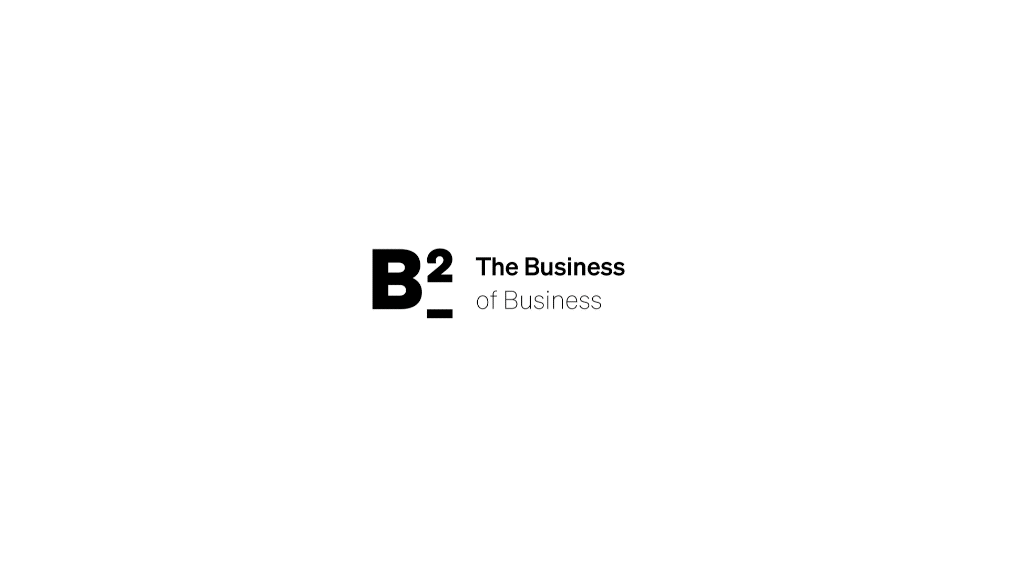
Typography & Color
Typography was selected based on legibility at scale, working for both large headers and paragraphs. To appeal to younger audiences, it simultaneously has a serious but modern tone. The publication covers four main topics: technology, markets, innovation, and people; the color palette was selected to reflect them.
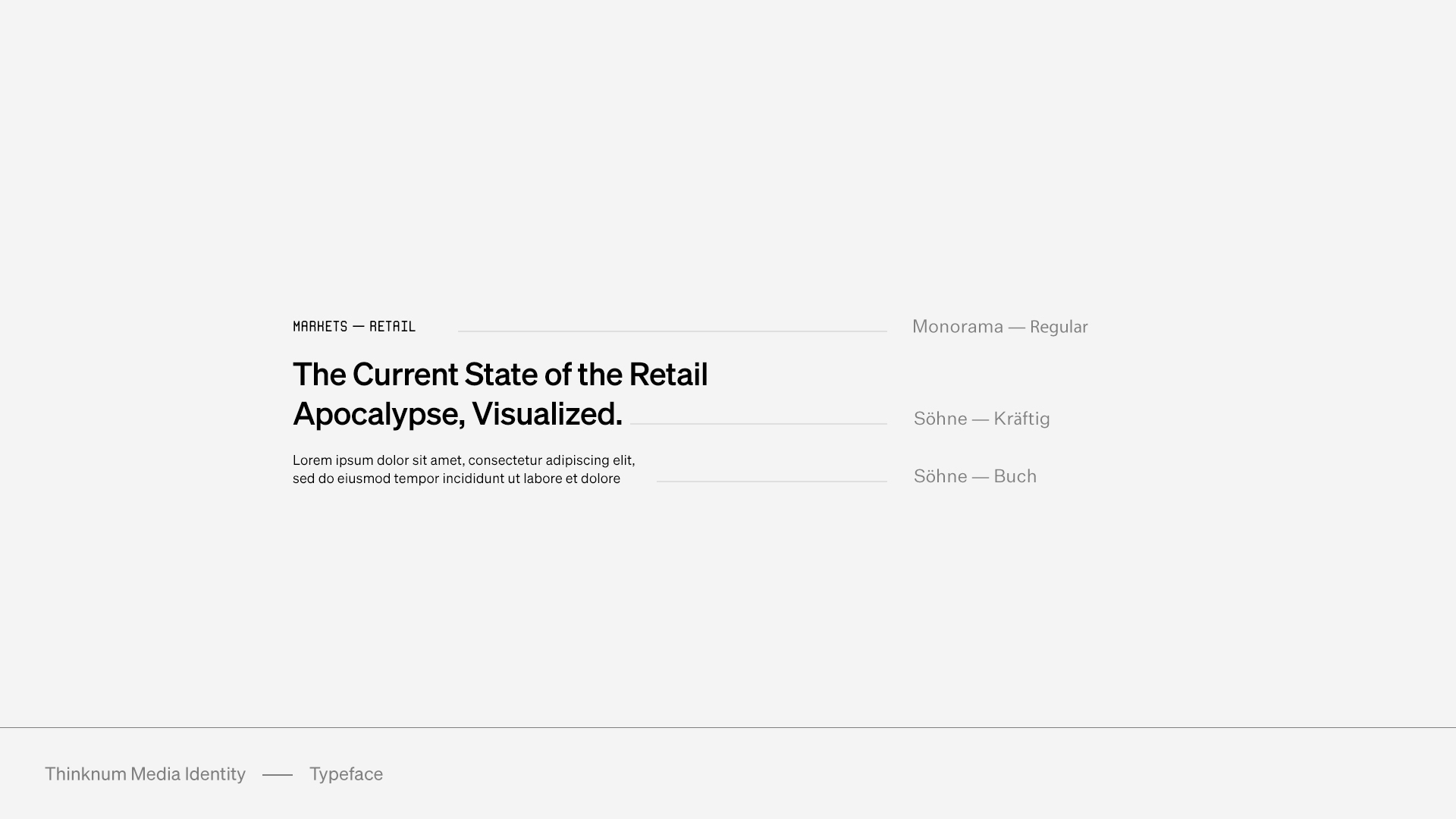



The Data
The Business of Business utilizes Thinknum's data throughout the site to drive business insights. We wanted to implement interactive media embeds (opposed to screenshots) and redesign the interface to distinguish the data from the Thinknum platform.
We reached out to Pentagram to collaborate on a series of four interactive chart embeds (line, bar, map, pie) that fit within the brand identity. A new sub-palette was introduced to functionally be applied within the visualizations themselves.
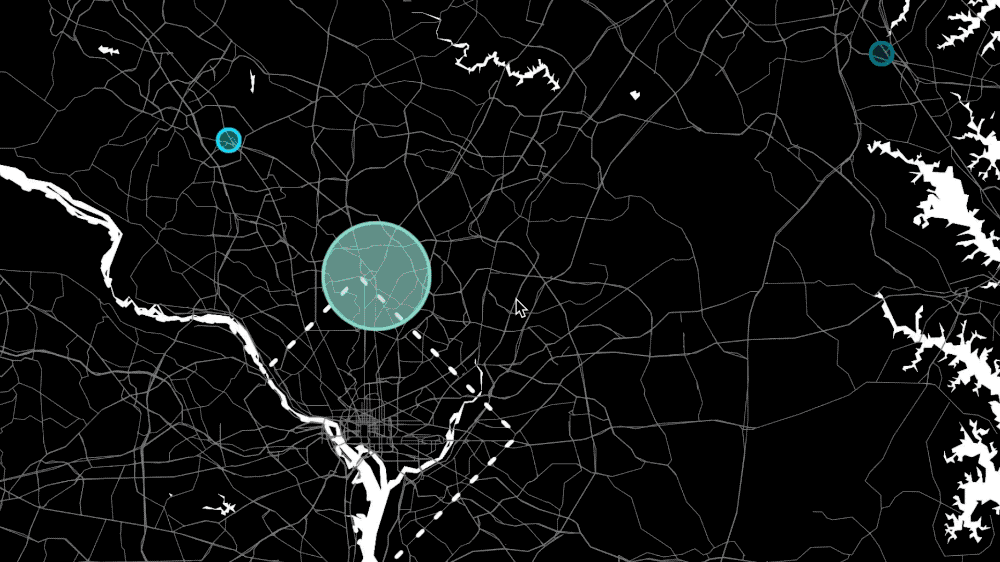


Imagery
Every article came with a thumbnail, which also served as a header image. The visual direction is in line with the mission statement to provide raw, transparent stories and interviews — code-centric, human-centered, and rebellious.
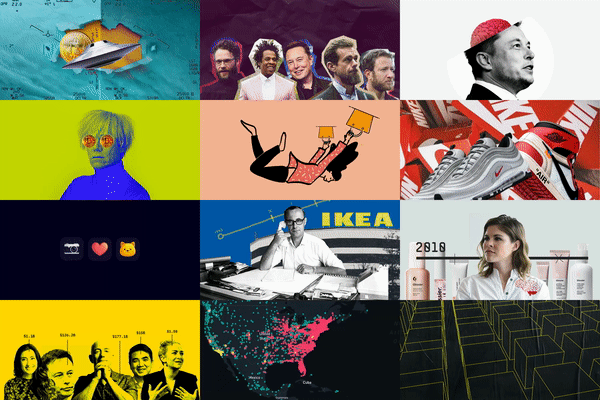
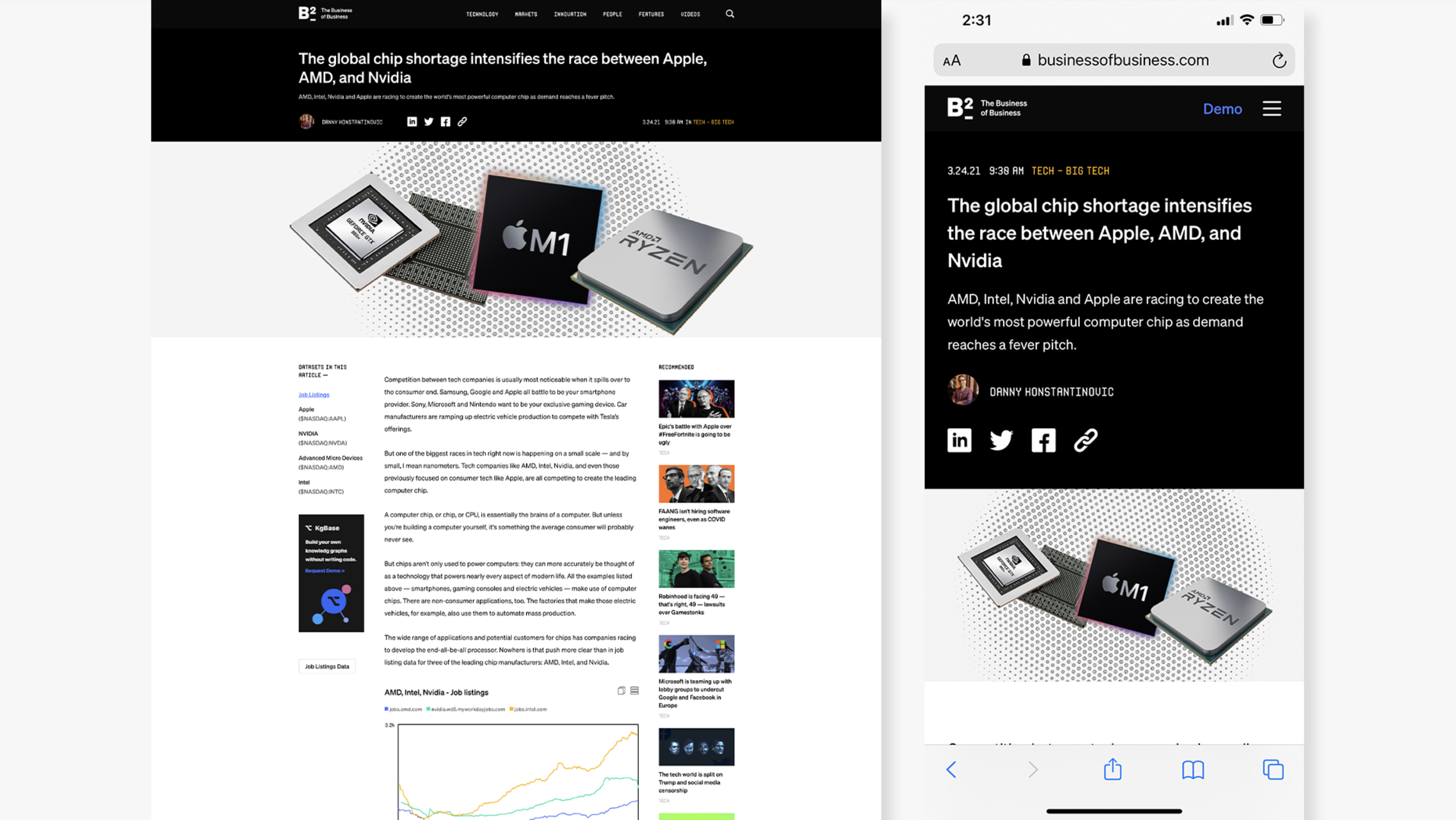
The
Product
Reimagining the Ecosystem

Research & Insights
I conducted a deep analysis of the current state of the website to figure out key painpoints/insights for all stakeholders involved.

The website's purpose was to drive lead generation to the Thinknum platform. In order to design with this in mind, I needed to understand how both new and existing readers interacted with the content, and where the majority of traffic was coming from.
83% of new visitors interacted first with a single article page
54% of visitors accessed content on mobile
78% of users came from organic search
10% of users came from referrals
88% bounce rate
Article pages needed to make the most impact in order to acquire users for both the media site and the Thinknum product. Data needed to be a key conversion touchpoint.
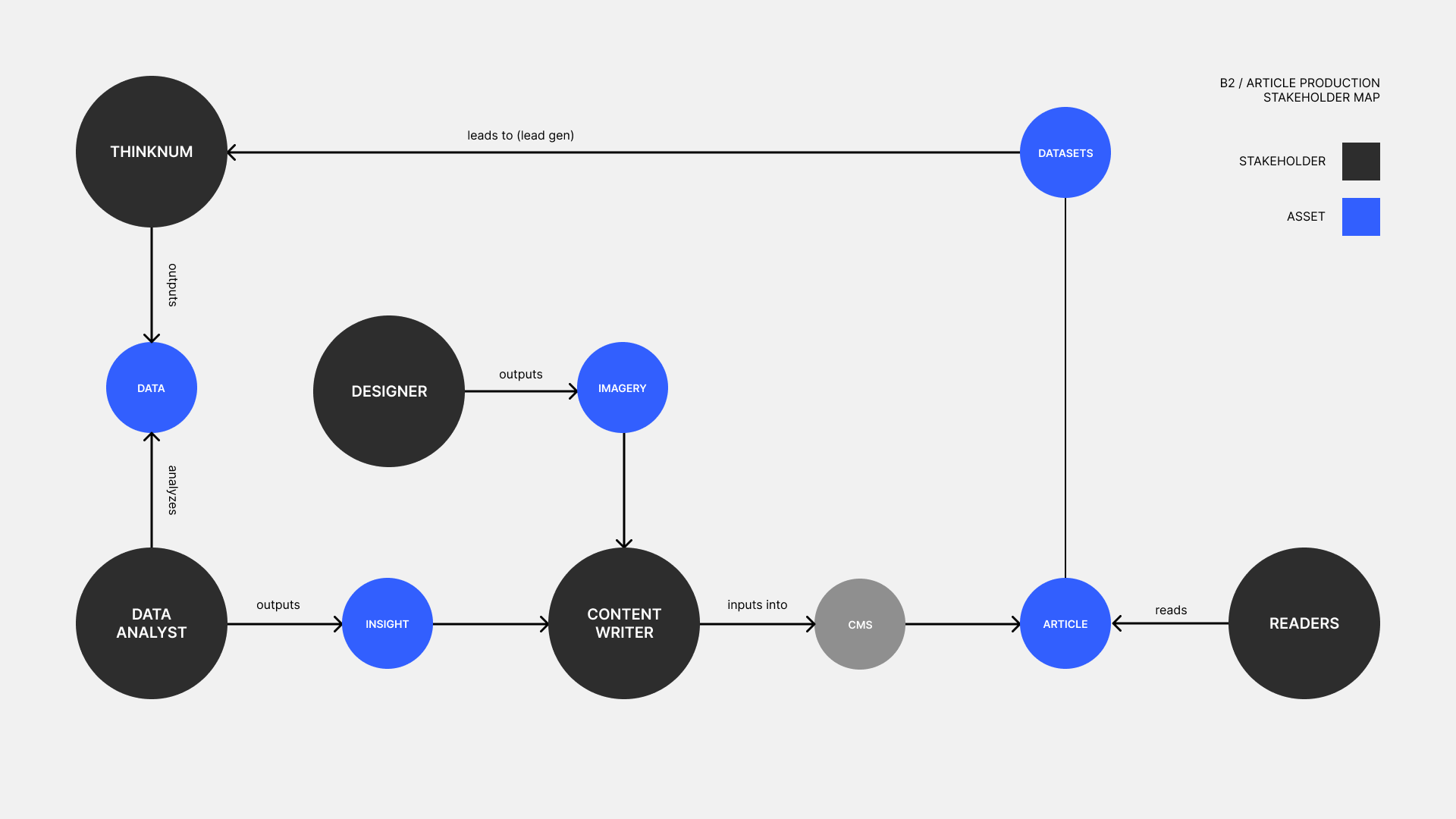
This stakeholder map represents the relationship between the Thinknum product, data analysts, content writers, designers, and readers - within the context of creating an article. This was important in identifying any potential opportunities and painpoints to streamline the entire process.
The Article Page
The article page would become the driving factor for key design decisions throughout the entire website. As a result, focusing on this first would help later inform me in the creation of a design system.

The old (above) article page did not have any immediate, visible touchpoints that led readers to the Thinknum product. It was also missing sources of content recommendation that can lead to a higher bounce rate.
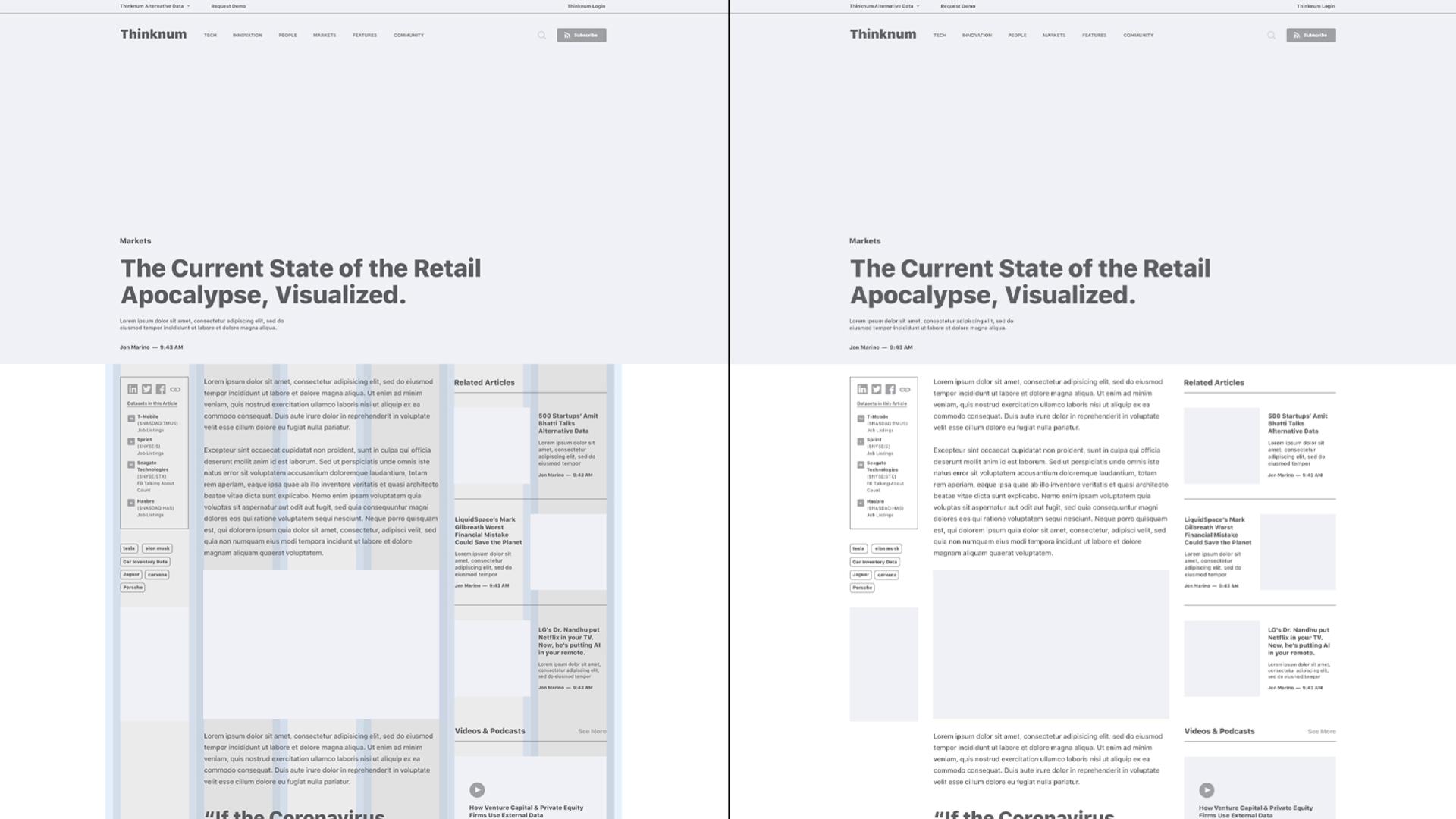
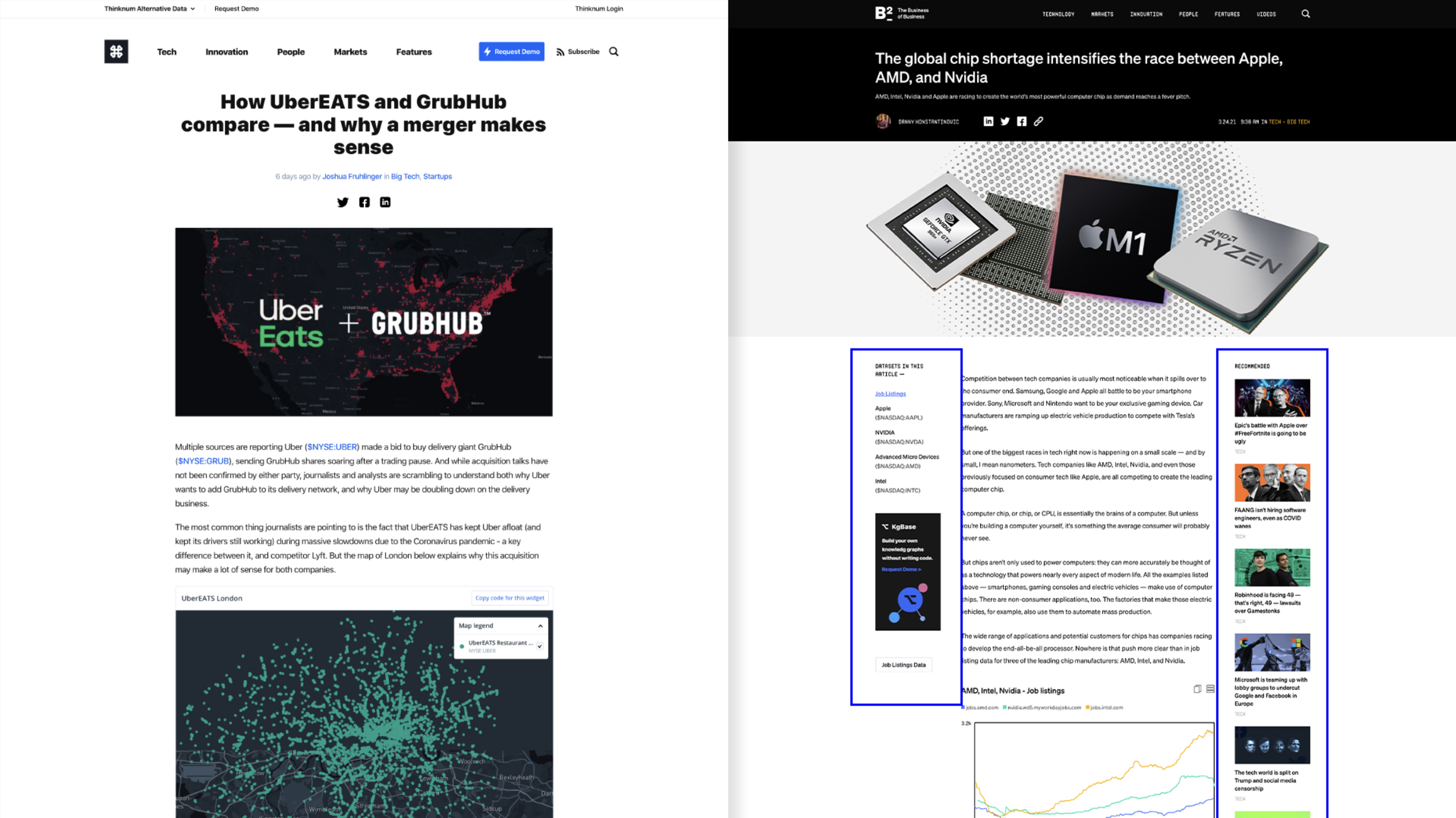
The new design accounts for these painpoints by having extra columns that serve their respective functions. Datasets used in the article are shown immediately, with links and tags to each one - ultimately leading readers to the Thinknum platform. A section with related articles was also introduced to help reduce bounce rate and increase retention.

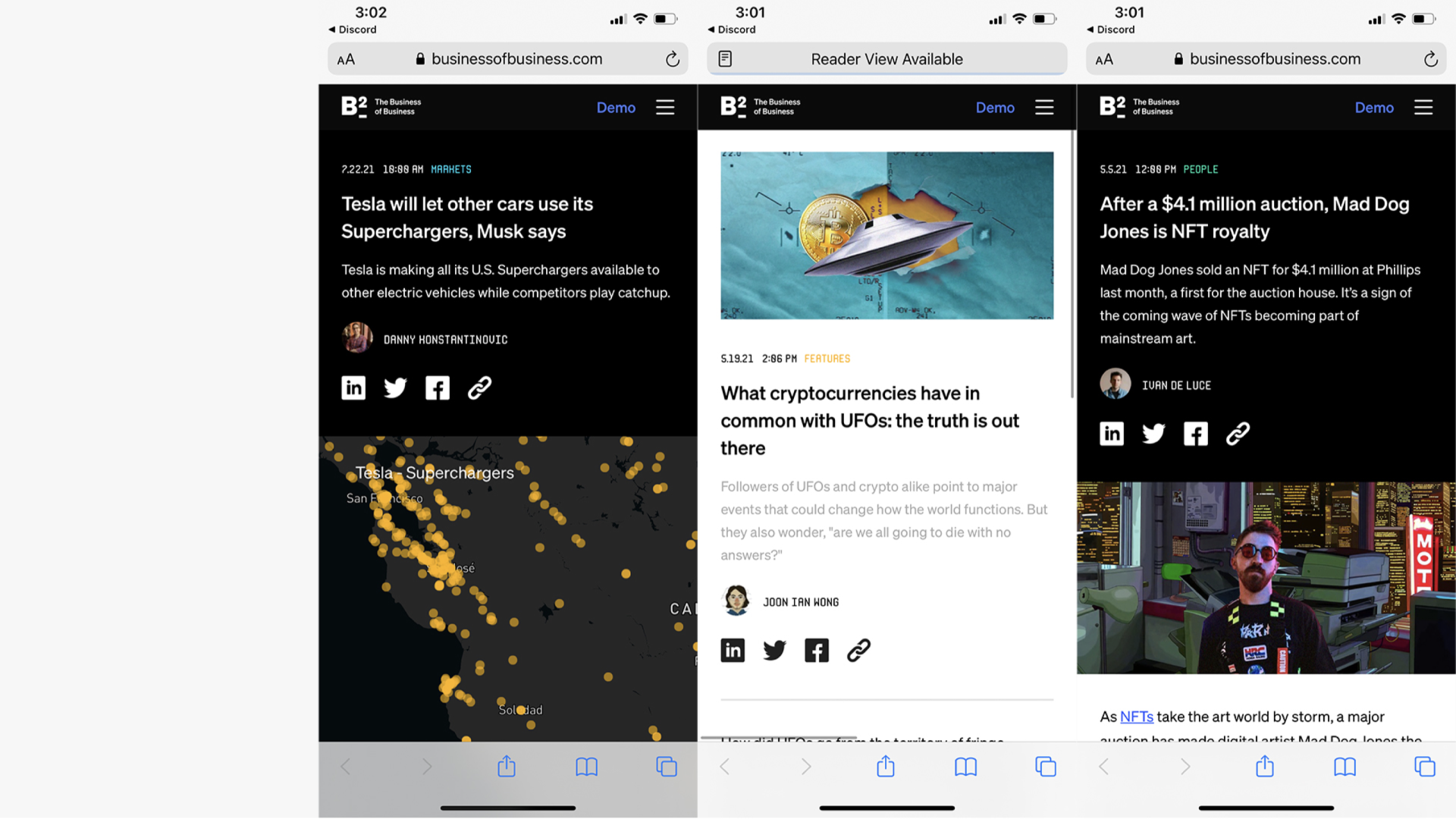
Variance in headers were also introduced as a way to combat visual redundancy and improve reader engagement.
Creating a System
Elements were taken from the article page to expand the site into the necessary pages it required, creating a visual system that would create consistency throughout. Header heroes were designed to be modular to be able to exist in multiple contexts, which in turn informed the designs of other visual components.
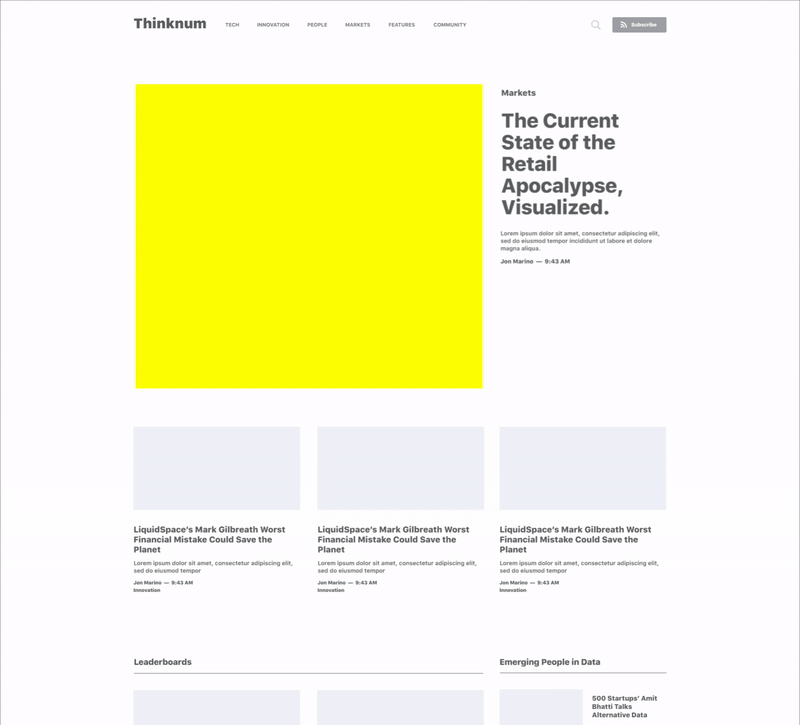
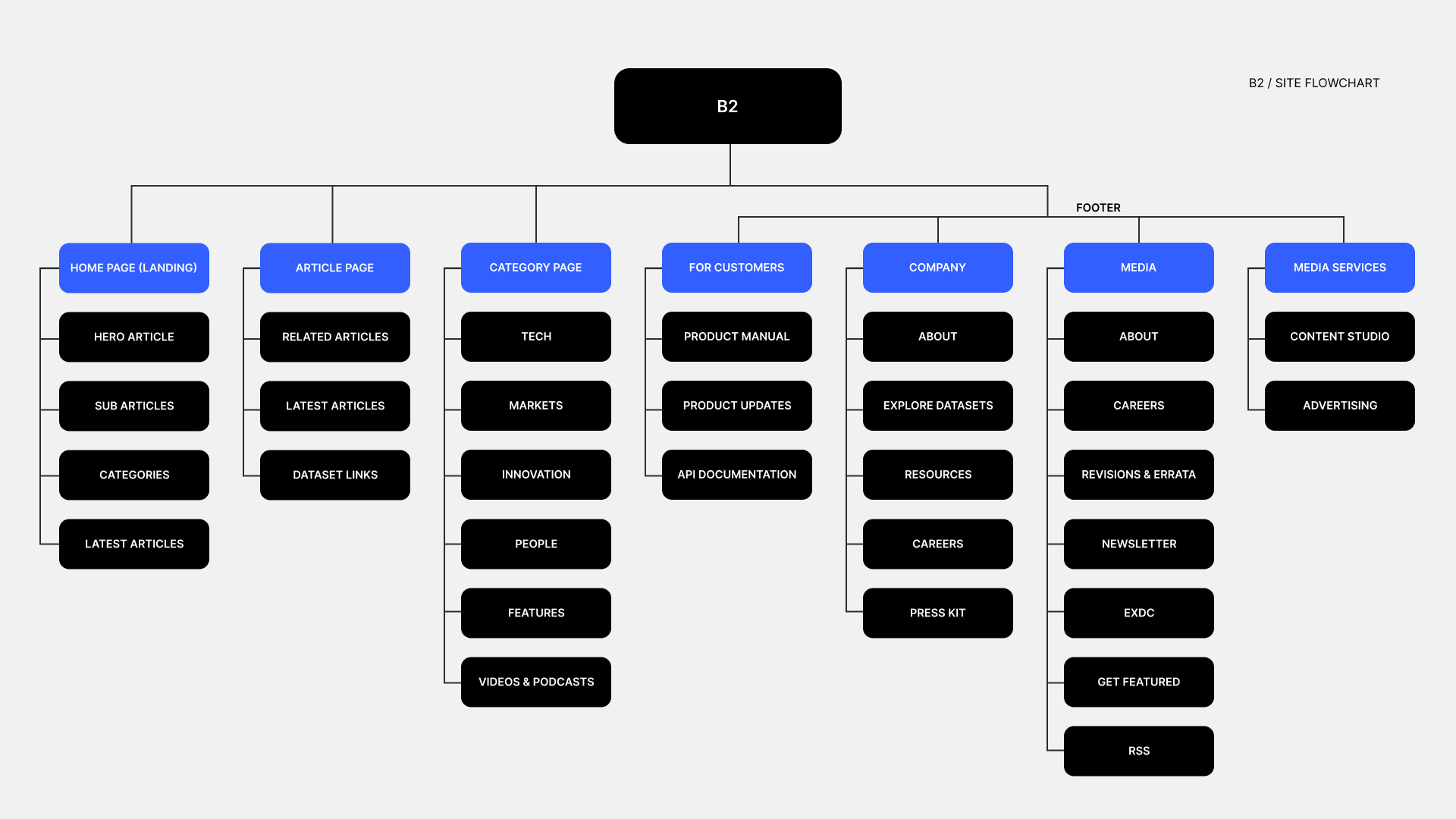


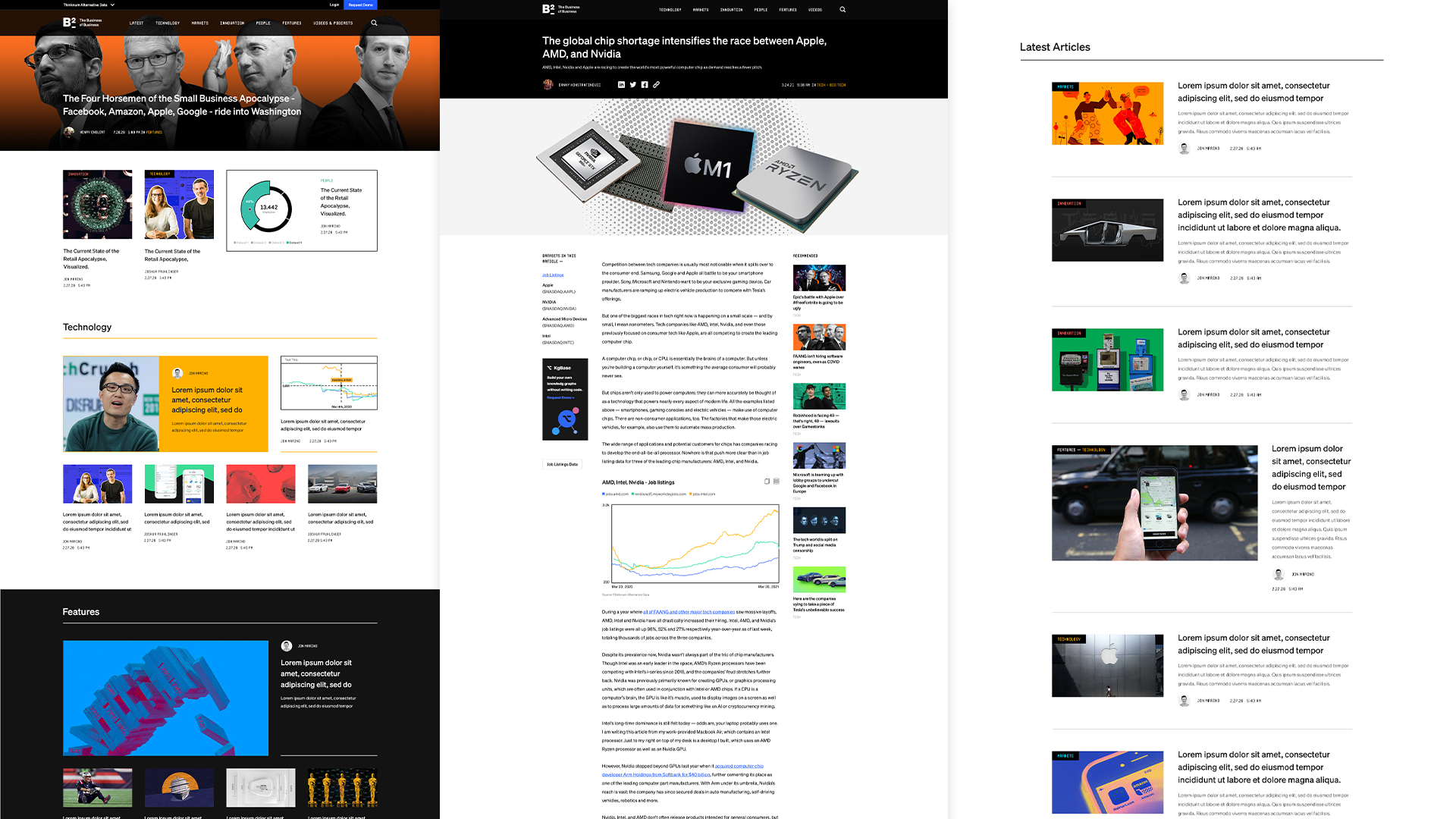
Integrating the Data
Working with Pentagram, we created four different types of visualizations that would serve as interactive frames embedded throughout the site.
The old website used static screenshots that provided face-level value. These new interactive iframes, using Thinknum's data, would essentially give readers a "test-run" of the Thinknum product. In addition to having a direct touchpoint to the product, having these be easily shareable and digestable was vital in contributing to the success of lead conversions, especially given the context of a cross-platform embed. These iframes existed as interactive heroes (headers), in-body embeds, as well as thumbnails.





Further
Touchpoints
Expanding the Ecosystem
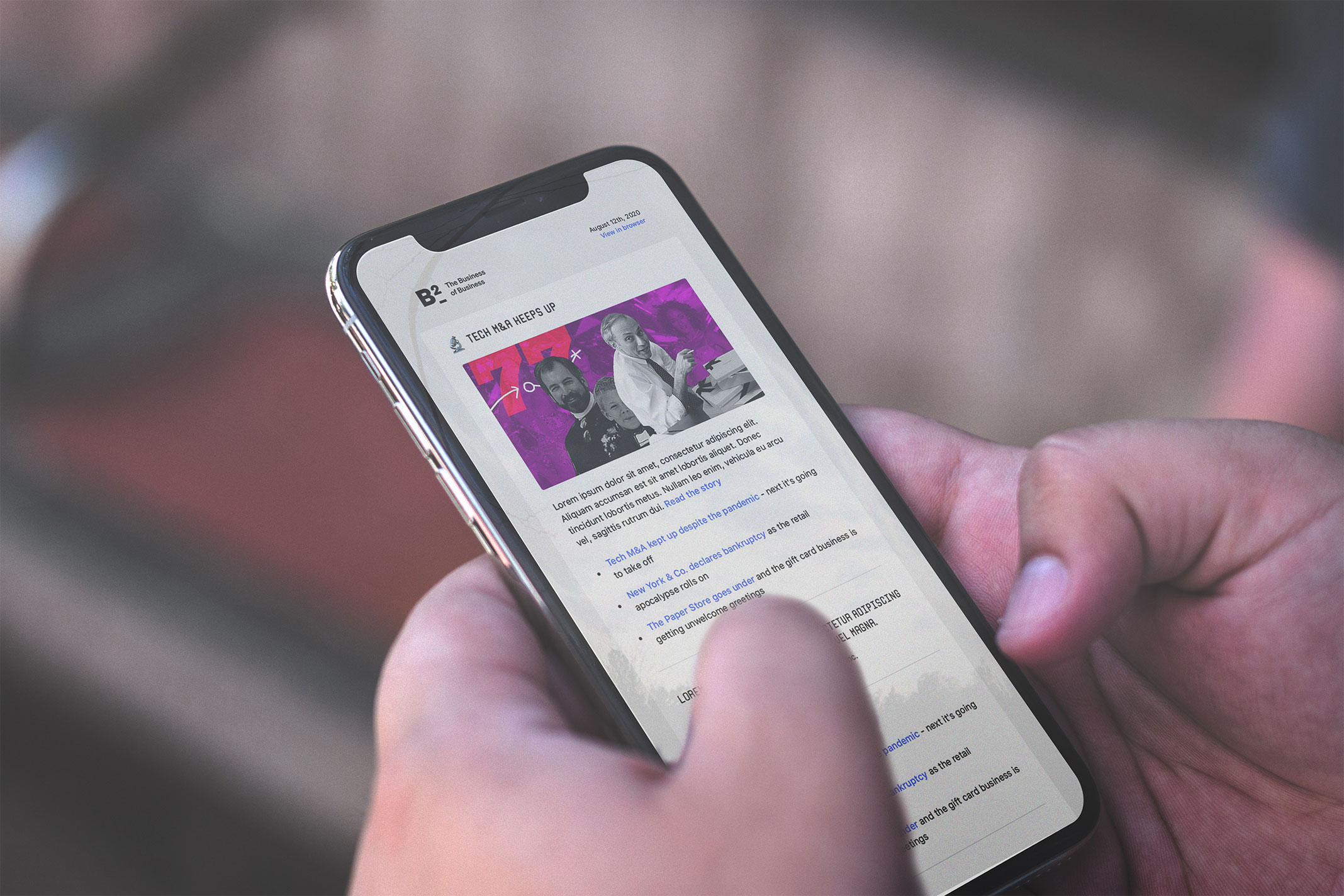
Newsletter
Aside from the website, The Business of Business sent out weekly newsletters highlighting our articles as well as handpicked business tweets that were relevant to our content.
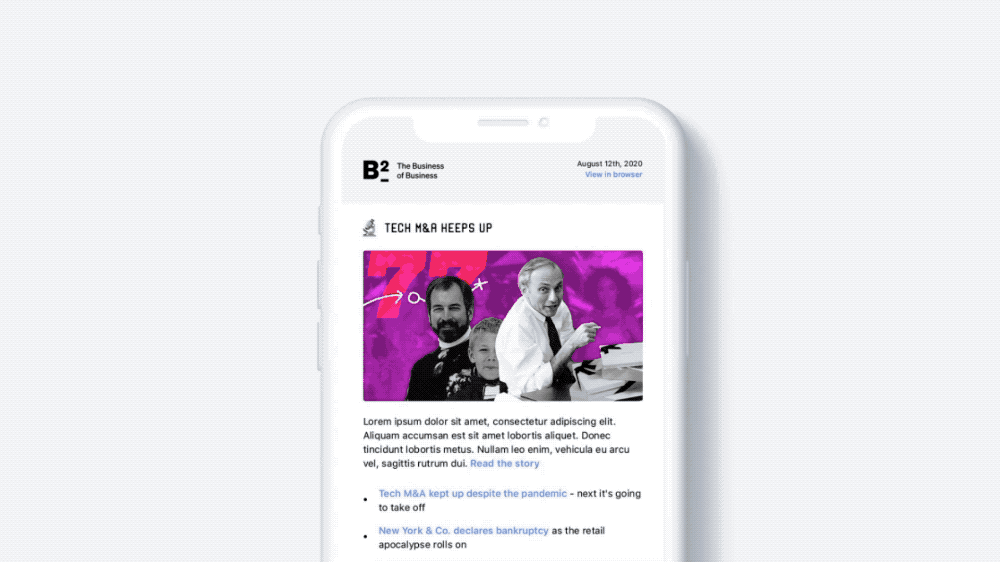

Media
We also conducted raw, unfiltered interviews that would be posted on our Youtube channel; these would also become transcripted articles available on the website.
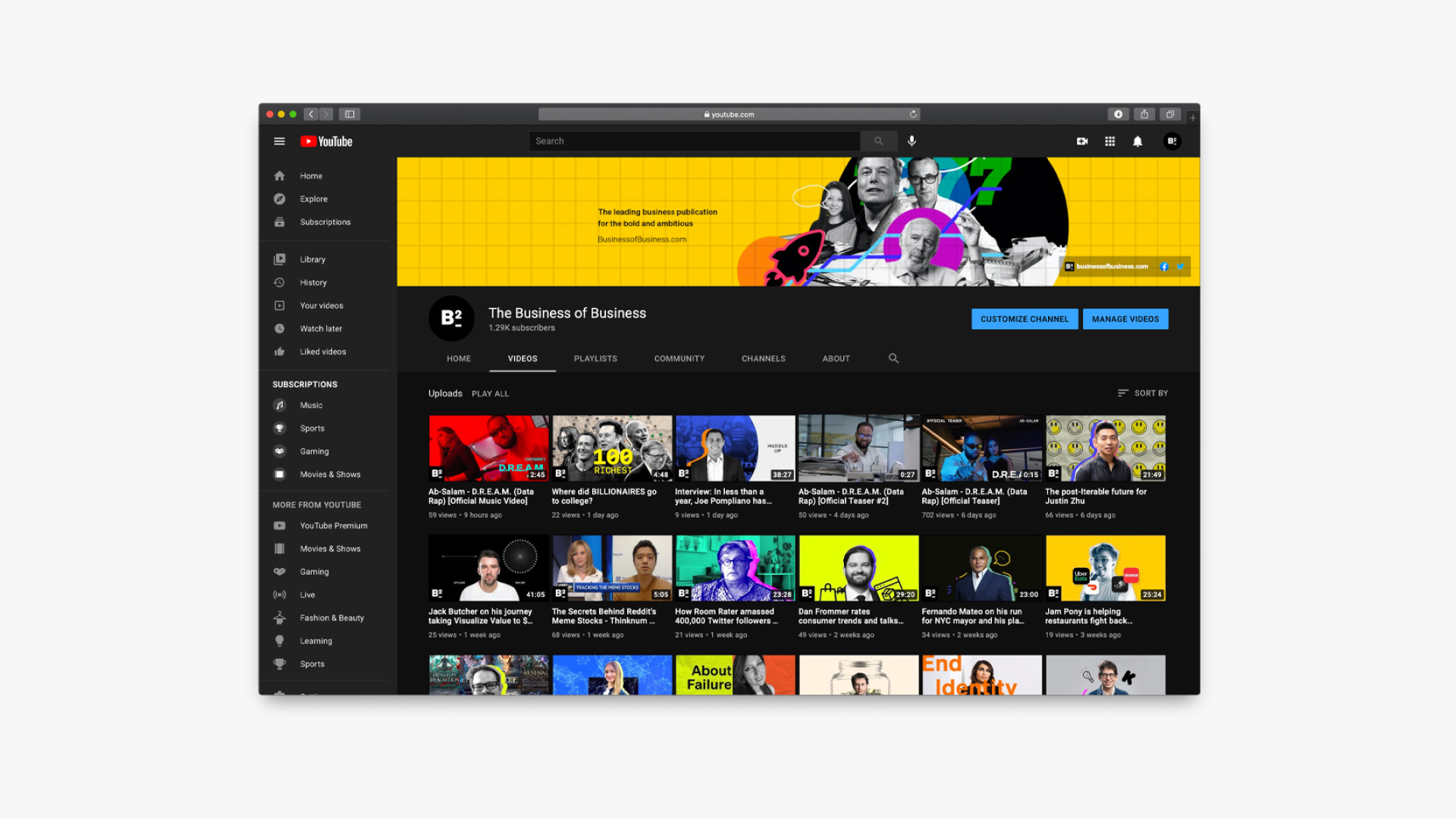
Social Marketing
A series of videos were created to be used as social marketing assets.